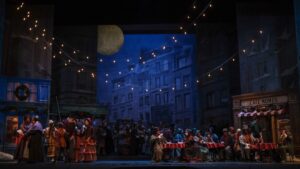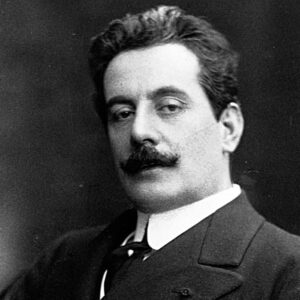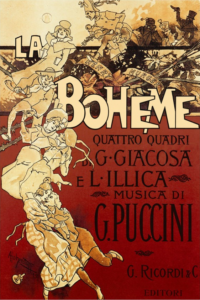La bohème 101: Program Notes

La bohème tells a story of friendship, love, and youth, through the tumultuous relationships between Mimì and Rodolfo, and Marcello and Musetta. Learn more about the history and music of this fan-favorite opera in the program notes below.
Learn more about La bohème, on stage at the Ellie Caulkins Opera House February 22-March 2.>>
Relatable Stories About Relatable Characters
Verismo: the idea that operas should tell believable tales. No more Germanic gods or Italian aristocrats. Verismo characters and their experiences should feel familiar. One might not have faced those challenges personally, but one can identify with them. One might know people who have been in a situation like that or perhaps spotted such a person “across a crowded room,” as Rodgers and Hammerstein would have it. Such actions and events resonate deeply with an audience, especially when given inspired music by a master composer. La bohème is exactly one such work.

Its composer, Giacomo Puccini (1857–1924), didn’t invent the idea of verismo, but he certainly proved that it could triumph. Specific inspiration for La bohème came from the novella Scènes de la vie de bohème (Scenes of Bohemian Life) (1849) by French writer Henri Murger. In this case, “Bohemian Life” does not refer to Dvořák’s homeland. Rather, “bohemian” also describes a lifestyle of artistic or intellectual interests with priorities different from those of mainstream society. Elsewhere in this program, Kristine McIntyre, director of Opera Colorado’s 2025 production, offers her own perspectives on the bright and dark sides of that life and what they might say about seizing the moment. Let us here consider how the ever-adored La bohème came to the operatic stage.
Words and Music Clash
One cannot simply take a novella and sing every word of it. What works on the page may not work on the stage, let alone serve the voice. Librettists Luigi Illica and Giuseppe Giacosa set about converting Murger’s tale into a singable, stageable story but soon found the composer to be a demanding and detail-oriented collaborator. Some lines Puccini rejected as “superfluous chattering.” At other times, he insisted on having a few more phrases—even just a few more syllables—inserted into the text for the purposes of transition, especially so that an important word—such as speranza (“hope”) in Rodolfo’s first aria—would fall where he wanted the climax of the melody. The composer’s continuing demands for revisions infuriated his librettists, who wrote to Puccini’s publisher, Giulio Ricordi, about the issue. Diplomacy preserved the partnership, in part because Ricordi refused to let Giacosa resign.
A Mixed Reaction at the Premiere

La bohème first reached the public at Turin’s Teatro Regio on February 1, 1896. Critics responded skeptically to the work. Perhaps they were expecting a dark tragedy, which La bohème is not. Admittedly, it has a tearful conclusion, but there is plenty of sweetness along the way, which seems to have annoyed some critics at the premiere. However, audiences had a different opinion, applauding and cheering enthusiastically. Puccini described the public reaction at Turin as “a splendid reception.” History has proven that audiences were correct about La bohème’s user-friendly excellence.
Love is Complicated
Although the music of La bohème is undeniably beautiful, the characters also help it to fly. Here is a world inhabited not by clichés but by believable human beings—utterly verismo! Which of us cannot believe in these vibrant young people, laughing in the face of poverty as their passions draw them together and drive them apart? Mimì and Rodolfo embody the idealistic side of love: a rose-tinted romance that can conquer all but death. By contrast, Musetta and Marcello personify a sharper-edged desire—more mature, perhaps, in its admission that love is not all hearts and flowers. Puccini’s task was to craft music that distinguished between those varying views of romance: one more rapturous, the other more restless.
Although we may not live the lives of these four lovers—and in some ways, it would be best not to do so—we nonetheless encounter them from time to time. For over a century, audiences have embraced this remarkable opera because its characters breathe with the spark of life. Whether it’s a first experience with opera or an oft-repeated encounter with Mimì and Rodolfo, La bohème reaches into the listener’s soul!
Program notes © Betsy Schwarm, author of the Classical Music Insights series.


